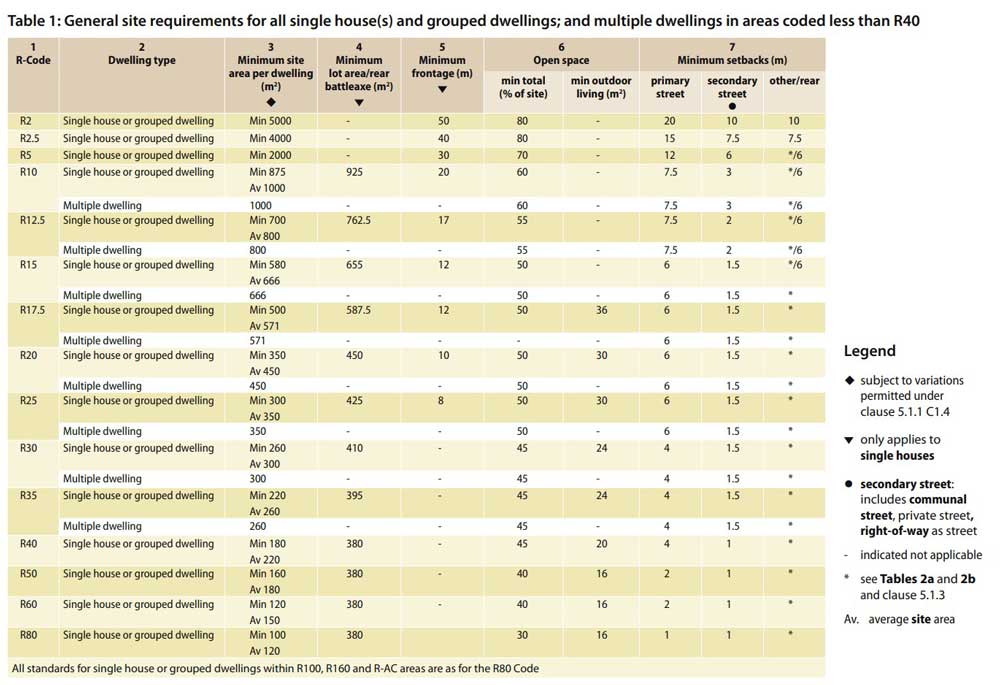Rules for Subdividing Land in Western Australia
Learn the basics of subdividing land in WA.
- Can I subdivide or develop the property I’m looking at?
- What are the planning rules around developing and subdividing land?
- Do you want to know if you can subdivide your land?
Before you get started in property development, you need to know the planning rules in WA around subdivision and development. Knowing the rules will help you understand if you can or cant subdivide a property, how many lots/dwelling you can produce, and the types and size of dwellings you can put on the subdivide lots. This page will provide you with detailed information on the planning rules around subdivision in Western Australia, to help you avoid mistakes and bad investment decisions. If you dont know the rules you could make costly mistakes with planning applications, or even worse end up purchasing a property that you cannot develop the way you thought you could. Whether you’re a big time or first time developer, the same planning laws apply to everyone subdividing land in Western Australia, and you can only get the answer to the question “Can I subdivide my land?” once you know the rules of subdivision.
If you can subdivide your residential land or not, and how many lots you can subdivide it into, is guided by your ability to comply with the performance criteria published in a design policy document called the Residential Design Codes (also known as The R-Codes, being State planning Policy 7.3 volumes 1 and 2.)
Consultation of the R-Codes density coding allowances will allow us to determine the subdivision potential of a block of land anywhere in Western Australia based on its current size and density coding.
Density coding is a number assigned to the land (ie. R20, R30, R40 etc). A land parcels density code can be found out by looking on the Local Government’s scheme map. The number means the number of dwellings permissible under that local scheme per hectare (10,000m2).
For example; R25 would be 25 dwellings per 10,000m2. So when you are looking at subdividing land or buying somewhere to subdivide, use this formula as a reasonable guide to work out if you have enough land to create two or more lots.
The formula should be used as a guide only. This is because when grouping lots in different subdivision types (battle-axe, survey strata and green title types) the R-Codes also stipulate minimum and maximum setbacks, average and minimum lot sizes, access leg sizes and percentages for things like common property.
In general, when subdividing land, WA Planning requirements in the R-Codes stipulate that the dimensions, area and particulars of new lots in a subdivision must meet the requirements set out in Table 1 of the R-codes Vol 1 , (which will become table D as of September 1 2023 when Rcodes vol 1 (2023) is released with the new medium density framework). A partial view of Table 1 from the R-Codes vol1 (2021) has been added below to illustrate these requirements. The full R-Codes site area requirements table in th most current volume can be accessed online at the DPLH website.

Concessions and Variations for Subdividing Land in WA.
It is important to note that it is possible to subdivide land into lots that do not strictly comply with the R-code requirements by applying for allowable variations or concessions.
These concessions can be found in either the R-Codes, DC.2.2 or Local Government Planning Polices and Scheme Texts.
An application requesting a variation may require additional documentation for consideration by local government and/or the WAPC to support the variation. Each application will be carefully assessed on its merits and then approved or rejected. There is a detailed learning module about applying concessions and variations in our WA guidebook book and online course (Infill developer and revisited in Masterclass), available in our courses and training section of the website.
Subdividing Land with Dual Density Coding.
Sometimes when looking at subdividing land in certain councils you will discover an area which is dual coded on the scheme map.
For Example; A block that has R15/25 coding means that R15 is the base code applied with a normal subdivision application made to the WAPC. The parent lot may however be subdivided to the higher R25, provided additional performance criteria set by the Local Government can be met. Demonstration of compliance with extra criteria is often required by supplying additional documentation with the application to the WAPC, or sometimes by lodging a DA with the Local Council.